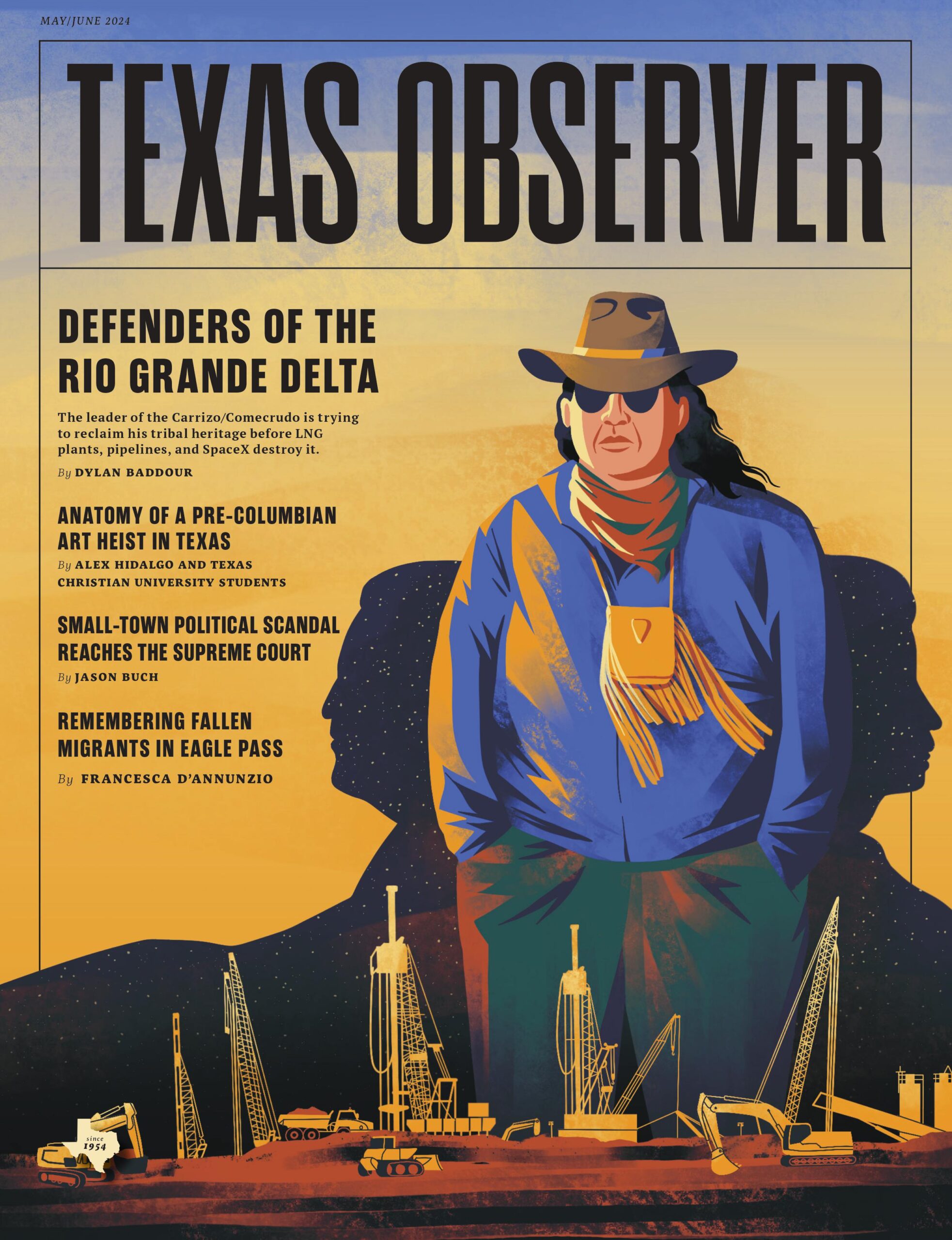ustxtxb_obs_1987_02_06_50_00016-00000_000.pdf
Page 8
BOOKS AND THE CULTURE Smithville THE VERY NOTION of folk art is a troublesome one because it exists in a world of class divi sion. The term itself comes not from the painters or musicians or bards but from’ the outside. It’s commonly used by people whose economic freedom or academic credentials allow them time to study the lives of the poor; these same qualifications entitle them to interpret, thus bring value to, the works of poor people for the understanding and enjoyment of larger society. As the wealth in this country becomes more concentrated, those at the top become increasingly isolated from the many at the bottom, not just economically, but physically and culturally. The academic discipline of folklore, at its best, strives to heal that violent breach. It can provide for poor people the darkrooms, publishers, and recording studios to ensure that their ideas and actions are not entirely eclipsed by the history those in power choose to tell. Such work requires a lust for accuracy and, in these times, a concomitant fervor for raising money. At its worst, folklore merely enlists the talents of poor people to entertain the rich. It can blur an artist’s vision by prettifying his work for sophisticated audiences or skew his intent by deleting a crucial account in a tape-recorded interview because that information strays from the folklorist’s interpretive trail. Into this realm has stumbled a large scale museum exhibit, “Handmade and Heartfelt: Contemporary Folk Art in Texas.” The crowd-count for its September 13 opening and ensuing twomonth stay at Laguna Gloria Art Museum in Austin rivaled all attendance records in that institution’s history. The show has since travelled to the Tyler Museum of Art \(Dec. 1-Feb. Julie Ardery is co-publisher of the Bastrop County Times, in which a longer version of this article originally appeared. and The Museum at Texas Tech. Heralded by its curators, folklorists Pat Jasper and Kay Turner of Texas Folklife Resources, as the harvest of the “first field-based effort to document the range of traditional visual/material art forms found in Texas,” “Handmade and Heartfelt” contains some 150 pieces by 96 artists and craftspeople. Its curators threw a wide lasso and pulled in fine examples of Texas craft \(saddlery, rial outcroppings of Texas’ diverse ethnicity \(Ukranian Easter eggs, Mexiimpressive pieces of the exhibit fall into neither category: Naomi Polk’s painting of Christ, Felix Harris’s towers of found objects. These works, and many more, are ideas and visions made physical. They are works of art. Reviewers of the show have somersaulted with praise, and in large measure, praise may be due. As a whole, Anglo, urban, and educated Texans and the cultural institutions they largely control have only begun to value the works of non-accredited artists. This display, which will handsomely confirm folk art’s worth for the state’s ctilture brokers, may cause enough amazement to prove educational: it has already encouraged some artists to rekindle their creative skills. Yet as the premiere field survey and expansive display of Texas folk art, the exhibit bodes much more. “Handmade and Heartfelt” will bring attention to dozens of previously isolated artists: it has already focused that attention on particular qualities of the pieces presented. It will likely change the ways in which the makers go about their work. It will certainly guide future exhibits of folk art. In these respects, the exhibit measures how folk artists can address wholly new audiences, and how such viewers And it’s in just these respects that “Handmade and Heartfelt,” despite its beautiful inclusions, has perilously failed. After a year’s travel, funded largely by the National Endowment for the Arts, the curators’ enthusiasm and pride are evident. “Covering more than 20,000 miles of country roads and urban back streets,” the curators write in the exhibit’s brochure, “we have ventured into barbershops and backyards, ranches and roadhouses in search of Texas folk proached their survey, as Kay Turner says, as a personal “process of discovery.” As a result, the curators organized the exhibit to emphasize not artists or even art, but a sociological premise: that “the production of folk art often revolves around certain salient aspects of traditional life.” \(The show groups the pieces under rubrics of religion, occupation, the home, the environment, folk techIn their zeal to support this premise and simultaneously assemble a stunning show, the scholars of Texas Folklife Resources have skirted their most basic responsibilities and set a dangerous example for the plethora of museum people, dealers, social scientists,. and collectors who will inevitably retrace their steps. They’ve relayed some significant messages: that folk art that such works may be changed to suit the interpretive or mechanical difficulties its presenters encounter; that folk artists need not be paid on the same schedule or treated with the scrupulousness that for-profit galleries and art agents observe; that, generally, by those with good intentions, folk art is there for the taking. The most glaring examples of such an attitude at the show’s opefting sat on the second floor of Laguna Gloria among the “Images of Faith of Devotion”: two cement tombstones labeled as made by “Mr. Tolbert/n.d./Smithville.” A resident of Smithville, I was stunned to see these pieces, which had mysteriously disappeared from Tolbert’s front porch several months ago. Kay Turner, associate director of Texas Folklife Resources, had taken the grave stones without Tolbert’s permission, without the knowledge of any member of his family. Turner met Bill Tolbert “about two years ago,” she said; “I stopped by, very briefly. We talked for five or ten minutes. I don’t think he would remember me.” As Texas Folklife Resources began earnestly to procure pieces for -Handmade and Heartfelt,” Turner Folk Art Mishandled By Julie Ardery 16 FEBRUARY 6, 1987


